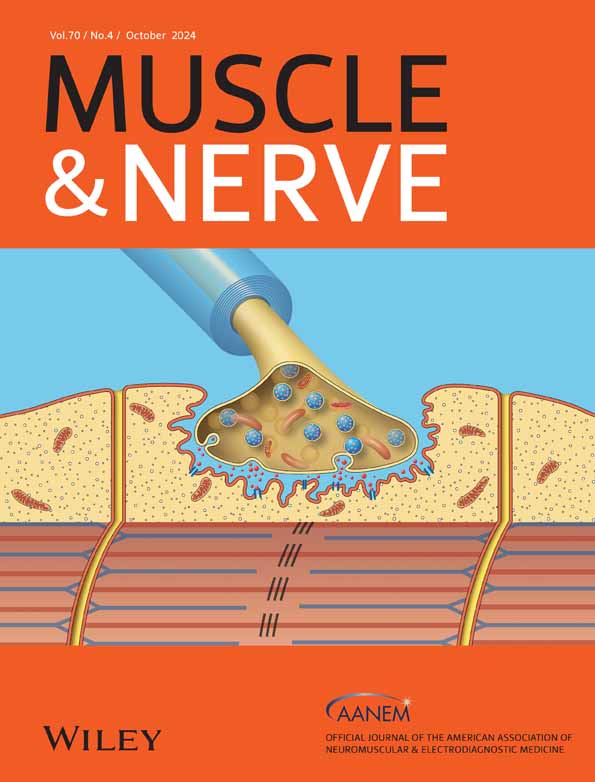Characteristics of after-discharges following compound muscle action potential or F-wave in primary peripheral nerve hyperexcitability syndrome
Youfang Hu and Qingyun Ding contributed to the work equally and should be regarded as co-first authors.
Abstract
Introduction/Aims
F-wave testing frequently reveals after-discharges of varied morphologies in patients with primary peripheral nerve hyperexcitability syndrome (PNHS), although reports are scant. This study aimed to explore the morphological characteristics of the after-discharges during F-wave tests in PNHS, and to assess the association between after-discharges and the disease classification.
Methods
We conducted a retrospective analysis of patients diagnosed with PNHS between 2014 and 2022. The morphological characteristic and duration of after-discharges during F-wave tests were analyzed. After-discharges in the Morvan syndrome group were compared with those in non-Morvan group, and between groups with positive or negative voltage-gated potassium channel (VGKC) complex antibodies.
Results
Twenty-nine patients were included in the study, of which 25 exhibited after-discharges. All after-discharges in Morvan patients occurred following compound muscle action potential (CMAP). In non-Morvan patients, after-discharges occurred following F-wave (32%) and CMAP (47%). The durations of after-discharges following CMAP were significantly prolonged in Morvan (54.2 ± 18.8 ms) compared to non-Morvan patients (34.5 ± 15.0 ms). The majority of antibody-positive patients (18/20) exhibited after-discharges following CMAP, whereas 67% of antibody-negative patients (6/9) showed after-discharges following F-wave.
Discussion
The varying presentations of after-discharges, including their location (after CMAP or F-wave) and the duration of after-discharge can assist in clinically classifying PNHS.
CONFLICT OF INTEREST STATEMENT
The authors declare no conflicts of interest.
Open Research
DATA AVAILABILITY STATEMENT
The data that support the findings of this study are available upon reasonable request from the corresponding author.




